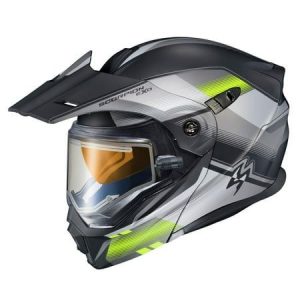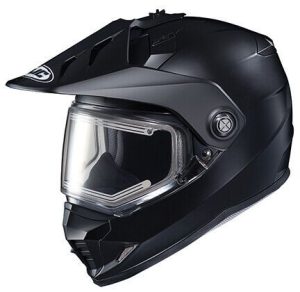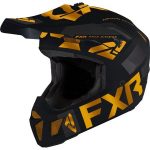Motorcycle helmets are lifesavers on the road, but even the most reliable helmet eventually reaches the end of its lifespan. Replacing your helmet with a new one is crucial for safety, but what do you do with your old, trusty companion? Don’t relegate it to a dusty corner of the garage! This guide explores a variety of creative and eco-friendly ways to repurpose or recycle your old motorcycle helmet.
Safety First: When to Replace Your Motorcycle Helmet
Before diving into creative projects, it’s vital to understand when a helmet replacement is necessary. Here are some key indicators:

- Visible Damage: Cracks, deep scratches, or gouges in the helmet shell compromise its protective capabilities. Replace your helmet immediately if you experience any impacts or falls.
- Exceeding Lifespan: Most helmets have a recommended lifespan of around 5-7 years. This can vary depending on usage, storage conditions, and exposure to UV rays. Check your helmet’s manual for specific recommendations.
- Loose or Worn Interior Padding: Over time, the helmet’s inner padding can wear down, compromising its ability to absorb impact energy. If the padding feels loose, excessively compressed, or uncomfortable, it’s time for a new helmet.
- Outdated Safety Standards: Helmet safety standards are constantly evolving. If your helmet is several years old, it might not meet the latest safety certifications. Consider upgrading to a helmet that adheres to current safety regulations.
When in doubt, always err on the side of caution and replace your helmet. Your safety on the road is paramount.
Repurposing Your Old Helmet: Creative Second Lives
If your old helmet is structurally sound but no longer suitable for riding, consider these creative ways to repurpose it:

- Planter Power: Transform your helmet into a unique planter! Carefully drill drainage holes in the base and fill it with potting soil. This quirky planter adds a touch of motorcycle personality to your home or garden.
- Artful Inspiration: unleash your inner artist! Use your old helmet as a base for a creative art project. Paint it, decorate it with decals or mosaic tiles, or turn it into a whimsical sculpture.
- Storage Solutions: The helmet’s interior provides a surprisingly handy storage space. Hang it on the wall and use it to store gloves, scarves, or other motorcycle accessories.
- Pet Haven: (with caution) With proper modifications (ventilation holes and comfortable padding), a retired helmet can potentially serve as a cozy bed for a small pet like a hamster or guinea pig. Ensure proper air circulation and prioritize your pet’s comfort and safety.
When repurposing your helmet, ensure any modifications don’t compromise its structural integrity. Avoid drilling holes near the shell or making alterations that could weaken the helmet.
The Green Route: Eco-Friendly Motorcycle Helmet Recycling
If your old helmet is beyond safe use or repurposing, recycling is the most environmentally responsible option. Here’s what you need to know:

- Check with Local Recycling Facilities: Not all recycling centers accept motorcycle helmets. Contact your local facility to inquire about their specific guidelines and accepted materials.
- Look for Helmet Recycling Programs: Several motorcycle manufacturers and safety organizations sponsor helmet recycling programs. These programs collect and responsibly dispose of used helmets, ensuring their components are recycled or repurposed whenever possible.
- Break it Down (if necessary): Some recycling facilities might require you to break down the helmet into its component parts (shell, liner, visor) before drop-off. Check with your local facility for specific instructions.
By recycling your old helmet, you’re contributing to a more sustainable future and keeping motorcycle parts out of landfills.
Finding Your Perfect Replacement: Essential Helmet Features
Now that you’ve explored options for your old helmet, it’s time to find its worthy successor! Here are some crucial factors to consider when choosing a new motorcycle helmet:

- Helmet Type: Select a helmet type that suits your riding style. Common options include full-face helmets, modular helmets, half-helmets, and off-road helmets. Each offers varying levels of protection and coverage.
- Safety Ratings: Look for helmets that meet or exceed the latest safety standards set by organizations like the Department of Transportation (DOT) or Snell Memorial Foundation.
- Fit and Comfort: A properly fitting helmet is essential for both safety and comfort. Measure your head accurately and try on different helmets to ensure a snug but comfortable fit.
- Ventilation: Good ventilation is crucial for keeping your head cool and comfortable during rides. Choose a helmet with adequate vents that allow for proper airflow.
- Visor Options: Consider the visor’s features and functionality. Opt for a scratch-resistant visor with anti-fog properties for optimal visibility in different weather conditions. Tinted or mirrored visors can provide additional sun protection, but ensure they comply with local regulations for daytime riding.
Additional Considerations: Think about features like a built-in sun visor, compatibility with communication systems, and noise reduction capabilities depending on your riding needs and preferences.
Equipping Yourself for the Ride: Where to Buy Your New Helmet
With your newfound knowledge, you’re ready to shop for your new helmet! Here are some options to consider:

- Motorcycle Dealerships: Dealerships offer a wide selection of helmets from various brands and cater to different riding styles. They can also assist with proper sizing and ensure you get a helmet that fits comfortably and securely.
- Online Retailers: Numerous online retailers offer motorcycle helmets, often at competitive prices. However, be cautious about online purchases. Ensure the retailer is reputable and offers a hassle-free return policy in case the helmet doesn’t fit properly.
- Used Helmets (with Caution): While tempting due to lower costs, purchasing a used helmet is generally discouraged. You can’t be sure of the helmet’s history or potential damage that may compromise its safety.
Invest in a high-quality helmet that fits you well. It’s a crucial piece of safety equipment that could save your life in the event of an accident.
Hit the Road with Confidence: Gearing Up for Safe Rides
So, you’ve given your old helmet a new lease on life through creative repurposing or responsible recycling, and you’re equipped with a safe, stylish new helmet for your next adventure. Now it’s time to hit the open road with confidence!
However, a helmet alone isn’t enough. Ensure you wear proper motorcycle gear, including a sturdy jacket, gloves, and protective pants. Always practice safe riding habits and stay alert on the road.


